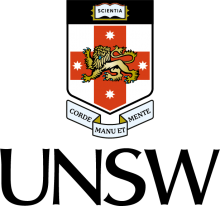A number of people on different continents toil over identical laboratory equipment, analysing amino acid sequences in proteins in a process used to answer the crucial question of whether a patient has a particular form of muscular dystrophy.
But these are not scientists or doctors. And this is not a real lab. The people are undergraduate medical students in different settings worldwide whose instructors all use the same virtual lab produced at Australia’s University of New South Wales and made available to them for free.
If internet technology can provide a platform for networks of learners, it has now quietly begun to be adapted by networks of teachers to share courses and course content, and to collaborate on better instructional approaches.
“Academic crowdsourcing is what I’m calling it,” said Nicholas Hawkins of the University of Queensland, head of the Biomedical Education Skills and Training network (BEST), through which the virtual lab was made available.
BEST has 1,716 registered academic members in more than 30 countries teaching 11 subjects, from nursing and allied health to pathology and physiology. Each member must go through a vetting process and register with an academic email address.
That network has now been followed by a similar operation based at Arizona State University in the US, driven by technology from the same start-up company and funded by the Bill & Melinda Gates Foundation to improve basic science instruction.
It is a mirror image of the massive open online course, or Mooc; instead of connecting huge numbers of students, it connects large numbers of teachers to collaborate in ways that academics have not traditionally practised.
“This hasn’t really been done before,” said Ariel Anbar, an astrobiologist who leads the Arizona State effort, called the Inspark Science Network. “We share material all the time, but we haven’t previously used technology in this way.”
Unlike BEST, which often covers complex topics in medicine and science, Inspark is meant to engage young undergraduates in introductory science courses that can often derail them. That has won it the support of the Gates Foundation.
The idea is to teach such things as introductory chemistry by asking questions such as whether there is life on Mars.
“Suddenly you’re teaching this in a way that somebody cares about,” Professor Anbar said. “When you teach that way, people learn better.”
But while many academics have developed stimulating and effective courses, the idea of working together on instruction is surprisingly new. After all, say the people involved in this idea, how many instructors are likely to think that someone else can teach in their discipline better than they can?
“I have yet to meet an academic who has looked at someone else’s work and said, ‘That’s perfect,’” Professor Hawkins said. “They explain things for a living, so they are confident that the way they do it is best for their students in their own context.”
It is paradoxical, he said, “that academics are very proprietary about their teaching outputs, yet at the same time are always very keen to make public their research findings, including signing away copyright to publishing companies. You can’t get ahead in research unless your colleagues worldwide know what you are doing, but it’s the opposite in teaching. There is an idea that academics are giving away their ‘advantage’ when they share teaching materials with others.”
He also pointed out, however, that if everyone had access to the resources of the best teachers, everyone would benefit. Students, Professor Hawkins said, would experience better outcomes, taxpayers would not have to pay for duplicated efforts, and universities could improve their productivity.
And neither BEST nor Inspark proposes to dictate what can be taught. Instead, they make available resources such as the virtual lab to be incorporated into members’ courses and adapted depending on, for instance, the level of sophistication of the students.
Primary and secondary schools already do this. What is propelling the idea for universities is, in part, the development of technology by a company called Smart Sparrow, which was begun in Australia by an Israeli who was raised in Argentina and is now based in San Francisco.
The firm’s founder and chief executive is Dror Ben-Naim, who gained a PhD in computer science at the University of New South Wales. He came up with the idea after speaking to an academic colleague in Australia. Her counterparts from other universities were constantly asking her about a virtual lab she had developed. If people could share music and video online, why couldn’t she share that?
“We almost felt bad that we didn’t think of it before,” Dr Ben-Naim said. “If you’ve got a really good professor, if she can share…resources, everyone benefits from that.”
Now users can build on and discuss each other’s work in what Dr Ben-Naim describes as a sort of Wikipedia create-and-share model for teaching. “Anyone can open things up, improve them, and contribute them back to the community,” he said.
However, there is still a need for a cultural shift for this to truly take off, Dr Ben-Naim added.
“Older faculty, it confuses them…But it’s really a network of teachers sharing really great teaching resources.”
POSTSCRIPT:
Print headline: Teaching innovations shared via ‘academic crowdsourcing’
Register to continue
Why register?
- Registration is free and only takes a moment
- Once registered, you can read 3 articles a month
- Sign up for our newsletter
Subscribe
Or subscribe for unlimited access to:
- Unlimited access to news, views, insights & reviews
- Digital editions
- Digital access to THE’s university and college rankings analysis
Already registered or a current subscriber? Login








